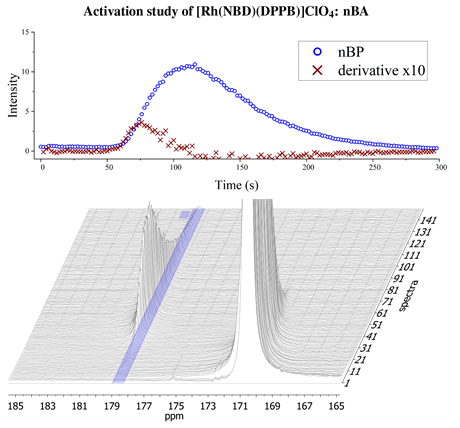Modern analytical chemistry has sought to develop “in-situ” methods of analysis. These methods examine the system while the reaction is happening, allowing the characterizing of catalysts in their working state, and the observation of chemical transformations in real time.
This thesis has developed the application of dissolution dynamic nuclear polarization (dDNP) nuclear magnetic resonance (NMR) spectroscopy. This technique adds an extra, preliminary step to conventional NMR, increasing the otherwise low sensitivity of the method ten-thousand fold.
NMR is one of the most common methods for discovering the structure of organic molecules. By enhancing the method using dDNP, we facilitate a number of otherwise unfeasible in-situ investigations.
Prior work using dDNP has primarily investigated metabolic and medical systems. In this thesis, we seek to expand the scope of the method by demonstrating its applicability to catalytic systems. The systems investigated were the formation of solketal, a green additive to diesel; the hydrogenation of olefins, a commonly used chemical reaction; and the 2nd generation Hoveyda-Grubbs catalyst, used for metathesis reactions.
The application of the method to catalytic systems was successful, providing a number of interesting results. It was demonstrated how we could follow the reactions of catalytic systems in real-time, observing the consumption of substrates and formation of reaction intermediates and products. Changing the conditions during the reaction, by reducing the hydrogen flow, had a direct, observable impact. The method was also utilized for analyzing the structure of a catalyst, and the changes incurred to the structure as the catalyst was activated or inhibited.

Activation study of [Rh(NBD)(DPPB)]ClO4: nBA